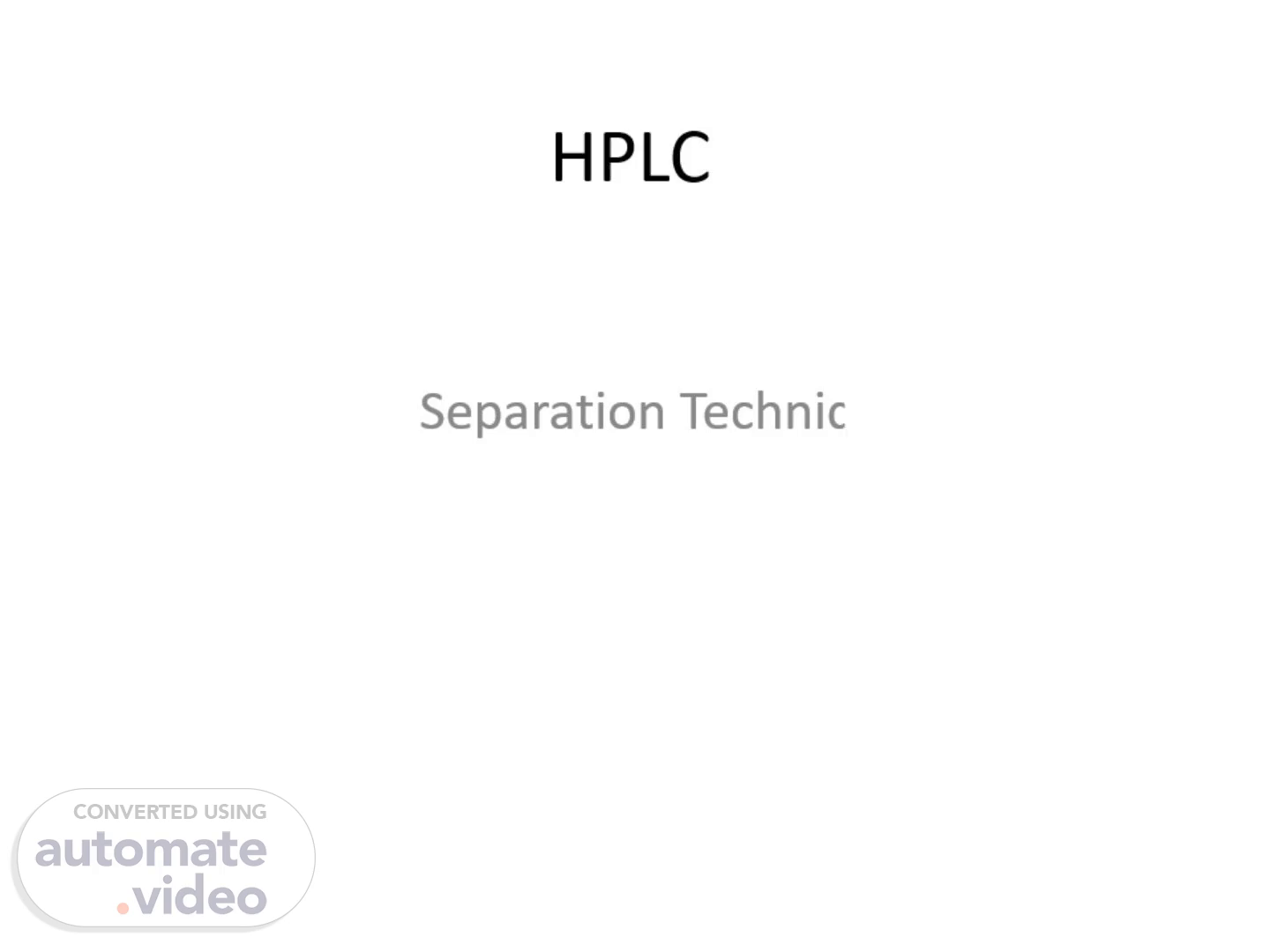Scene 1 (0s)
HPLC. Separation Technique.
Scene 2 (6s)
[Audio] High-performance liquid chromatography Schematic representation of an H-P-L-C unit (1) solvent reservoirs (2) solvent degasser (3) gradient valve (4) mixing vessel for delivery of the mobile phase (5) high-pressure pump (6) switching valve in "inject position" (6') switching valve in "load position" (7) sample injection loop (8) pre-column (guard column) (9) analytical column (10) detector (in other words IR UV) (11) data acquisition (12) waste or fraction collector. High-performance liquid chromatography (H-P-L-C-) formerly referred to as high-pressure liquid chromatography is a technique in analytical chemistry used to separate identify and quantify specific components in mixtures. The mixtures can originate from food chemicals pharmaceuticals [1] biological environmental and agriculture et cetera which have been dissolved into liquid solutions.[citation needed] It relies on high pressure pumps which deliver mixtures of various solvents called the mobile phase which flows through the system collecting the sample mixture on the way delivering it into a cylinder called the column filled with solid particles made of adsorbent material called the stationary phase.[2] Each component in the sample interacts differently with the adsorbent material causing different migration rates for each component.[3] These different rates lead to separation as the species flow out of the column into a specific detector such as UV detectors. The output of the detector is a graph called a chromatogram. Chromatograms are graphical representations of the signal intensity versus time or volume showing peaks which represent components of the sample. Each sample appears in its respective time called its retention time having area proportional to its amount.[2] H-P-L-C is widely used for manufacturing (for example during the production process of pharmaceutical and biological products) [4][5] legal (for example detecting performance enhancement drugs in urine) [6] research (for example separating the components of a complex biological sample or of similar synthetic chemicals from each other) and medical (for example detecting vitamin D levels in blood serum) purposes.[7] Chromatography can be described as a mass transfer process involving adsorption and/or partition. As mentioned HPLC relies on pumps to pass a pressurized liquid and a sample mixture through a column filled with adsorbent leading to the separation of the sample components. The active component of the column the adsorbent is typically a granular material made of solid particles (for example silica polymers et cetera) 1.5–50 μm in size on which various reagents can be bonded.[8][9] The components of the sample mixture are separated from each other due to their different degrees of interaction with the adsorbent particles. The pressurized liquid is typically a mixture of solvents (for example water buffers acetonitrile and/or methanol) and is referred to as a "mobile phase". Its composition and temperature play a major role in the separation process by influencing the interactions taking place between sample components and adsorbent.[10] These interactions are physical in nature such as hydrophobic (dispersive) dipole–dipole and ionic most often a combination.[11][12] Operation The liquid chromatograph is complex[13] and has sophisticated and delicate technology. In order to properly operate the system there should be a minimum basis for understanding of how the device performs the data processing to avoid incorrect data and distorted results.[14][15][16] H-P-L-C is distinguished from traditional ("low pressure") liquid chromatography because operational pressures are significantly higher (around 50–1400 bar) while ordinary liquid chromatography typically relies on the force of gravity to pass the mobile phase through the packed column. Due to the small sample amount separated in analytical H-P-L-C typical column dimensions are 2.1–4.6 millimeters diameter and 30–250 millimeters length. Also H-P-L-C columns are made with smaller adsorbent particles (1.5–50 μm in average.
